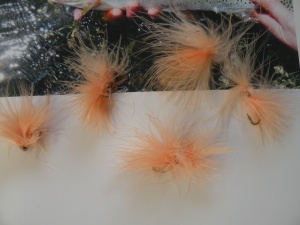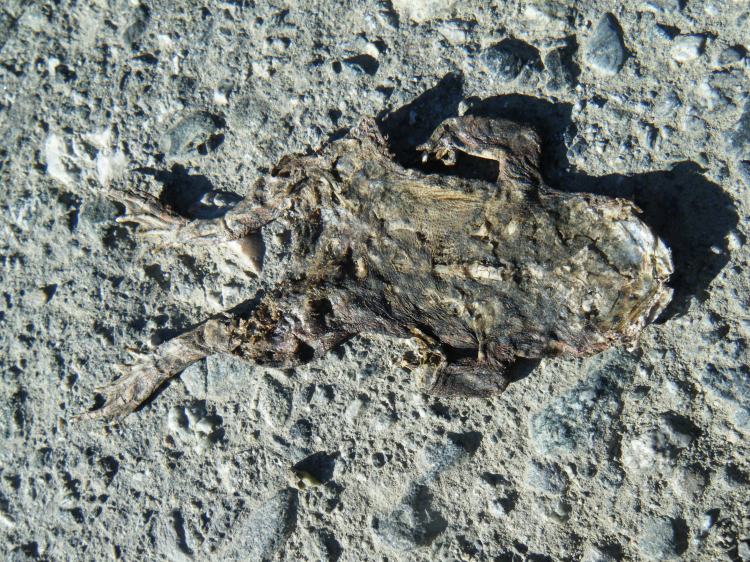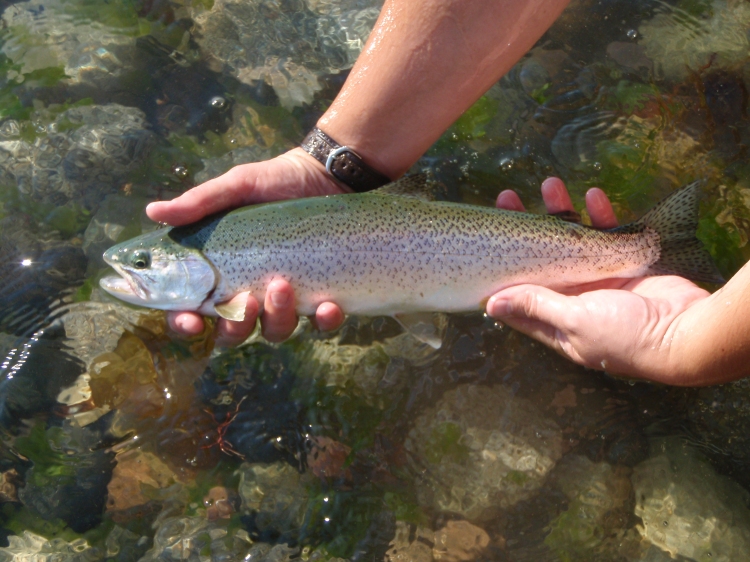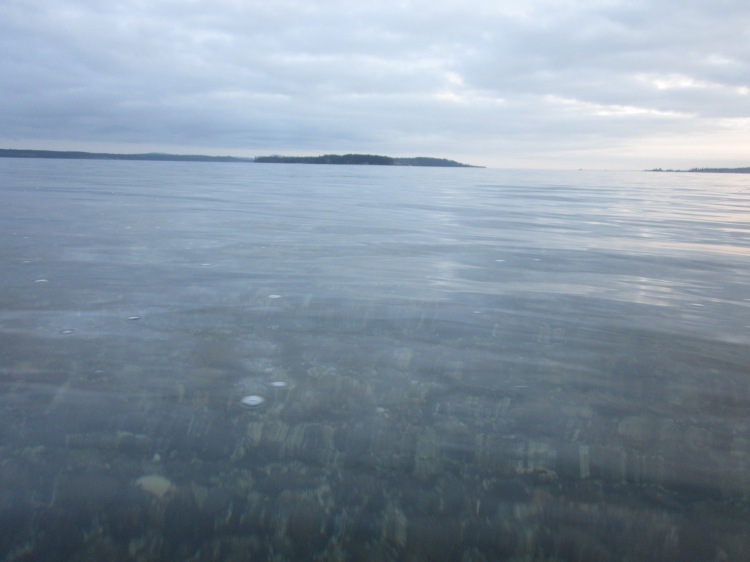One of most fun methods of fly fishing for these great fish in salt or fresh water is with surface flies. They are really good for searching out fish when none are rising or visible, especially on the beach, and you definitely are having fun even when you don’t hook up, which is more common with surface flies

Salt water:
Dry fly fishing in the salt although seemingly a bit strange has some history and a following here on the west coast. Patterns like the Cutthroat candy, Miyawaki beach popper, or gurgler fished with a strip retrieve or gently swung in the tidal current(in areas where there is significant current) can and will bring up big cutthroat who behave almost like sharks when they are chasing these flies. A Miyawaki popper is one of the best searching patterns there is and will definitely get the attention of larger cutthroat in it’s vicinity. The drawback (only for you and not for the fish) is that you will not catch as many fish as with a subsurface fly due to a lower hooked to landed ratio. You will however usually have more fun. Casting out 40-50′ with your tip to the water, employing an erratic 2-4 inch strip so that your fly is leaving a small v wake is how I most often fish these patterns. They will also sometimes follow the fly in so strip it in close. If a fish hits, swirls, splashes, flips, or otherwise goes jaws on your fly wait for the line to tighten up and then strip strike. Try to avoid rearing back on the rod, and if there is no tension keep your fly fleeing or twitching at different speeds just like a frightened or wounded baitfish would. Sometimes they will hit as many as 8 or 10 times in a row, and sometimes they ignore it after that initial strike. A good follow up is to either put a cast right back into the same vicinity or change flies quickly and put something new into the area. While there is not often a bad time to try the dry the best times are when there are fish actively feeding on the surface or schools of small baitfish being visibly attacked and are v waking or jumping out of the water to get away. Big sea runs get quite aggressive in these situations. It takes a little faith to tie on a dry fly and stick with it especially at the beach but in the end it is a lot of fun…give it a try.
This is ideal weather for stripping a gurgler across the surface, indeed a fish swirled on my fly while I was getting my camera out for this picture(below) a nice spring sea run at the beach pictured with the gurgler and my beulah classic switch rod


a recent salt water dry fly cutthroat

Some of my favourites for the beach,(clockwise from left, cutthroat waker, gurglers, miyawaki beach popper)

Fresh water:
If you are fishing for sea run cutthroat you have a few choices in terms of dry fly approaches. Classic dry fly dead drift and waking/stripping larger dry patterns. In my experience with sea runs however, the best approach is casting and strip retrieving flies.
I’ve rarely caught sea runs on the dead drift. This is not to say that they can’t be caught on or don’t feed on small BWO’s or the like, or that you can’t dead drift larger patterns like stimulators (a great cutthroat fly) or chernobyl ants indeed that is a completely legitimate and most enjoyable way to target them. There are several reasons I am not an advocate of this approach, mostly because wherever you are likely to catch sea runs, there are often young salmonids, juvenile cutthroat or steelhead and they are often 1 to 5 inches long and they will feed recklessly on anything that looks like food. When you fish around these fish with small flies with small hooks you are going to hook lots of them, and what you will often find is that you will be hooking these little fish in the eyes, throat, etc. If you put a large waker, dry (or larger wets) on you will find you will catch far less of these little fish which are the future of the fishery you are enjoying. Another reason is that often if you watch sea run cutthroat feeding on mayfly or other small insect hatches is that the fish rising are often smaller. Recently a friend and I found ourselves on a sunny afternoon on a mid island river this spring several types and sizes of mayflies starting coming off on a nice moderate run with a very nice tailout. My friend was fishing spinners and I was fishing various cutthroat flies on my switch rod. Some cutthroat began rising on these mayflies but every fish that was coming up was small and looked to be about 4-10 inches long. Anyways not long after the hatch started my friend with his spinners hit a very nice adult cutthroat in the deepest slot of that section, followed by another in a nearby shoreline slot. In the hour we fished this stretch we did not see a single large cutthroat rise. Big adult sea runs are largely piscivorous and do not often come up and feed on little insects, they eat the little fish that are trying to eat those insects. My point is not about spinners but that the traits of larger sea runs.
Like Summer run steelhead you can catch them with a downstream waked pattern, but most often I find that stripping your fly back upstream or across is what actually triggers a response from these fish. The hook up to landed ratio is pretty low, but again it’s a lot of fun to have big sea runs or resident cutthroat blast your waker. You can also follow up with a subsurface or sunk fly. As far as waking in current make sure your fly has enough resistance to wake properly. The small gurglers I use at the beach will be pulled under by the current in a river, so smaller versions of flies that are designed for heavy current pull such as summer steel flies like the grantham sedge, steelhead caddis, cutthroat waker, bombers, Lambroughton skater, after dinner mint or thompson river caddis are all good choices. Stimulators, fat alberts, and chernobyl ants are also quite fine. What I like to do is cast slightly downstream and swing the fly downstream into soft edges, eddies, and seams and then strip it back, if they are going to hit they usually do with reckless abandon. Stripping or swinging the fly across tail outs is also another good tactic and if you are fishing rivers with summer steelhead then that’s where the “tweener” 5 and 6 wt. switches or a (6 wt single) come in handy just in case there is an aggressive summer in the vicinity. This style of fishing is best suited to switch or spey rods on island rivers. Not all water nor times of day are suited to this approach, but you won’t learn the where’s and what’s unless you tie one on and leave it on. It usually takes faith to put on and stick with a waker, but the results are more than worth it.
a nice cutthroat caught on a big waker in the ______ river

like all other posts, this is purely my opinion based on spending a lot of time chasing cutthroat in rivers and beaches, your mileage may vary.















